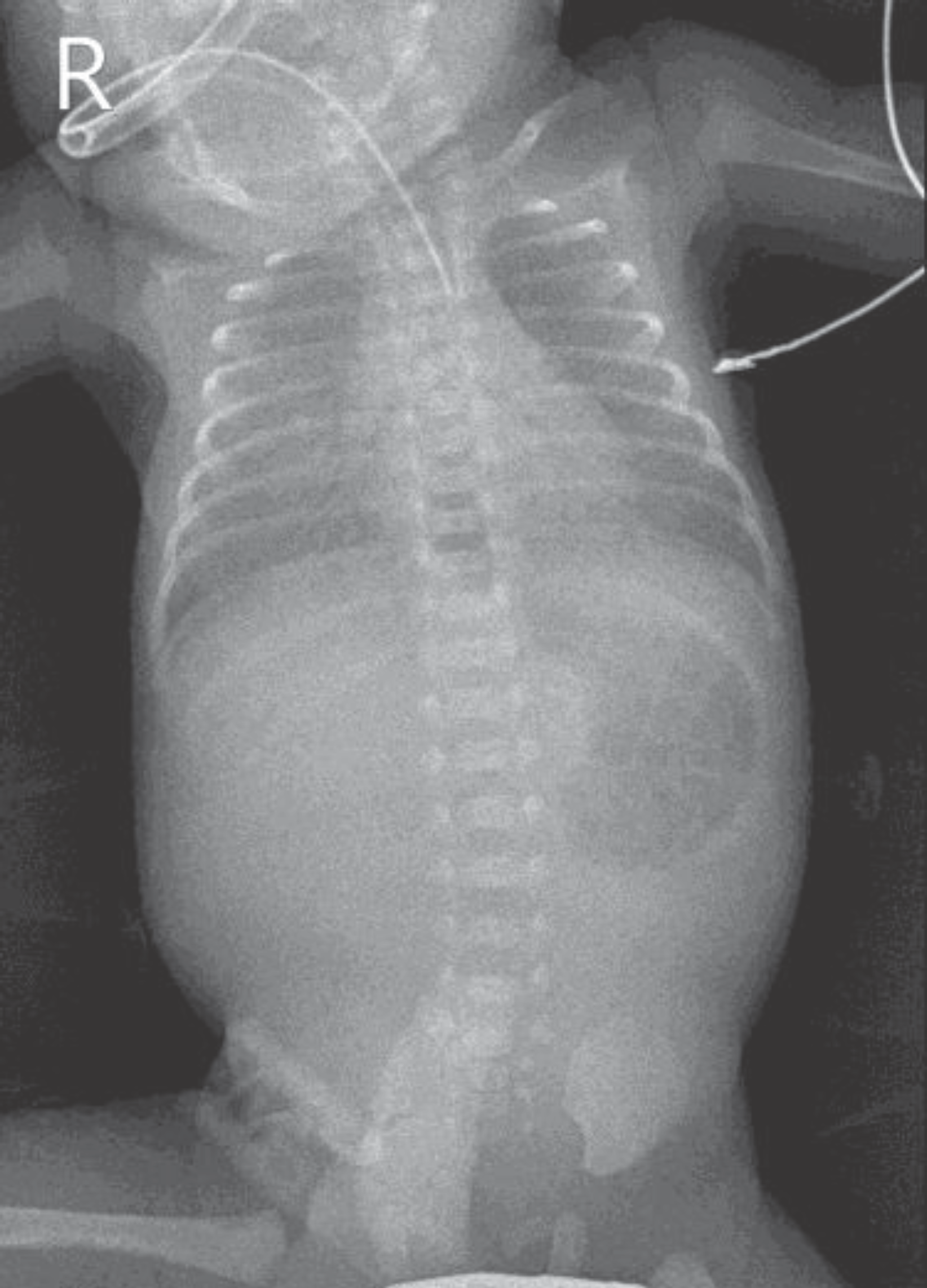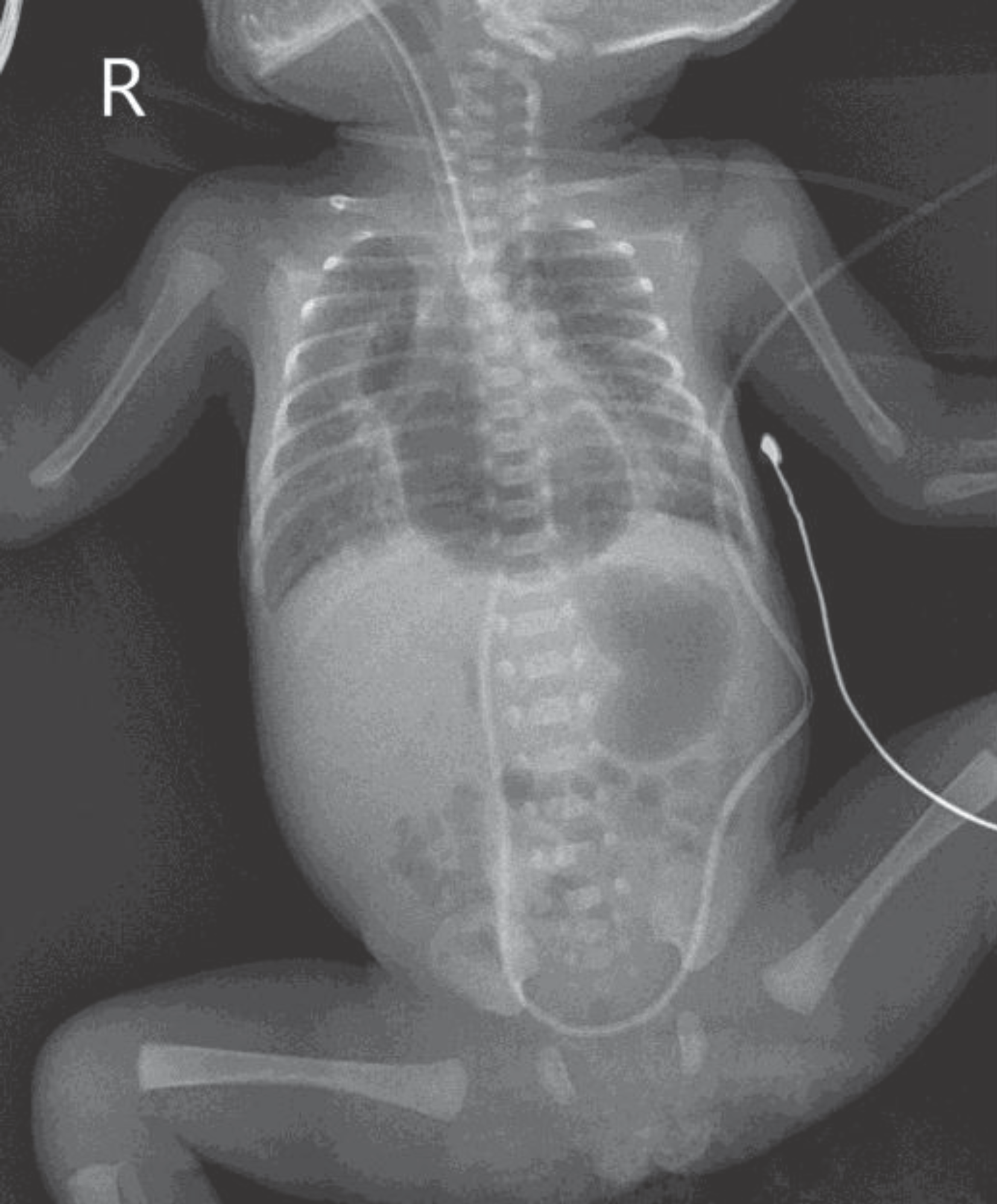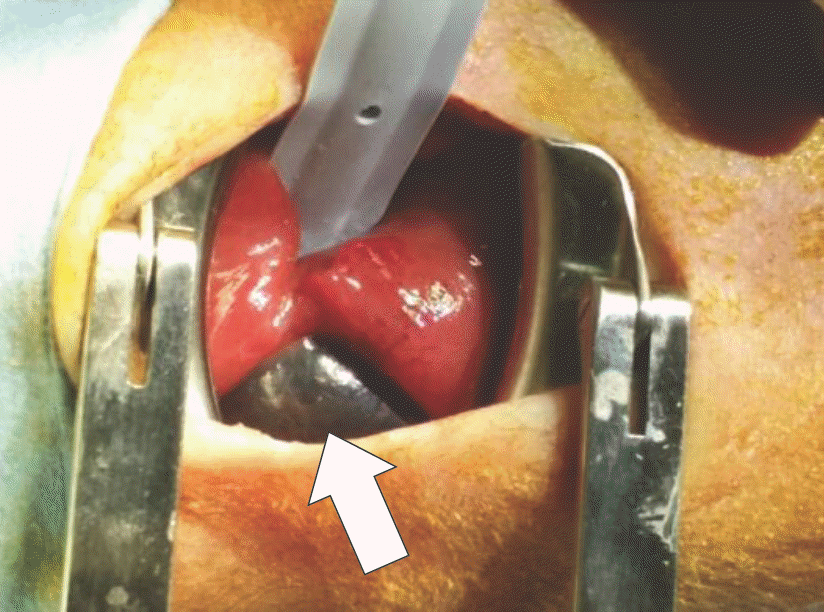Abstract
Bronchial defects in neonates are known to occur very rarely as a complication of mechanical ventilation or intubation. This causes persistent air leakage that may form massive pneumomediastinum or pneumothorax, leading to cardiac tamponade or cardiorespiratory deterioration. Early diagnosis and treatment of bronchial defects are essential, as they can be accompanied by underlying severe lung parenchymal diseases, especially in preterm infants. We encountered an extremely low birth weight infant with an air cyst cavity in the posterior mediastinum that displaced the heart anteriorly, thereby causing cardiopulmonary deterioration. During exploratory-thoracotomy, after division of the air cyst wall (mediastinal pleura), we found a small bronchial defect in the posterior side of the right main bronchus. The patient had shown respiratory distress syndrome at birth, and she was managed by constant low positive pressure ventilation using a T-piece resuscitator after gentle intubation. As the peak inspiratory pressure was maintained low throughout and because intubation was successful at the first attempt without any difficulty, we think that the cause of the defect was not barotrauma or airway injury during intubation. The fact that the margin of the defect was very clear also suggested a congenital origin. To our knowledge, this is the first case of congenital bronchial defect in English literature.
References
1. Said S, Salhab K, Muehlstedt S, Wahoff D. Paramediastinal air cyst with traumatic bronchial injury: A rare complication of neonatal resuscitation. Thorac Cardiovasc Surg. 2012; 60:236–8.

2. Beckstrom AC, Ricca RL, Gow KW, McAdams RM. Persistent posterior pneumomediastinum in a neonate. Pediatr Int. 2012; 54:441–2.

3. Purohit DM, Lorenzo RL, Smith CD, Bradford BF. Bronchial laceration in a newborn with persistent posterior pneumomediastinum. J Pediatr Surg. 1985; 20:82–5.

4. Hong YR. Bronchial perforation complicating endotracheal intubation in an extremely low birth weight infant. J Korean Soc Neonatol. 2012; 19:154–7.

5. Sacks GD, Chung K, Jamil K, Garg M, Dunn JC, DeUgarte DA. Surgical salvage of acquired lung lesions in extremely premature infants. Pediatr Surg Int. 2014; 30:573–6.

6. Jeng MJ, Lee YS, Tsao PC, Soong WJ. Neonatal air leak syndrome and the role of high-frequency ventilation in its prevention. J Chin Med Assoc. 2012; 75:551–9.

8. Jung AY, Yang I, Go HS, Shin SM, Yoon HK, Woo JY, et al. Imaging neonatal spontaneous pneumomediastinum using ultrasound. J Med Ultrason (2001). 2014; 41:45–9.

9. Franco L, Vieira F, Marcal M, Tuna M. Neonatal spontaneous pneumomediastinum. Lung. 2014; 192:819–20.

10. Lee CT, Tsao PN, Peng SS, Jeng SF, Chou HC, Chen CY, et al. Spontaneous multiseptated cystic pneumomediastinum in a term newborn. Pediatr Neonatol. 2008; 49:197–200.

11. Zuppa AA, D'Andrea V, Verrillo G, Riccardi R, Savarese I, Cavani M, et al. Spontaneous neonatal pneumomediastinum: Radiological or clinical diagnosis? J Obstet Gynaecol. 2014; 34:138–40.





 PDF
PDF ePub
ePub Citation
Citation Print
Print






 XML Download
XML Download